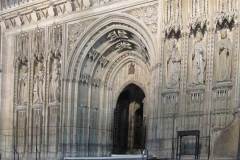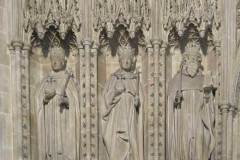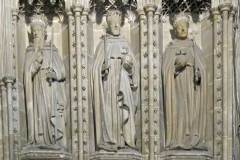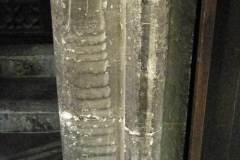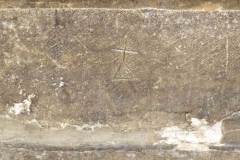The pulpitum, a large stone screen standing between the crossing and the choir (Image 1), was built around 1450. It was constructed round the earlier screen of Prior Eastry which in turn had stood since 1305. Such screens demarcated the area used by monks (the choir) from that available for public worship (the nave). It displays statues of six royal figures, and incorporates a central doorway and gate which, prior to the dissolution, could be used only by members of the priory. There is no firm documentary evidence to identify the royal figures but the general modern consensus is that (left to right) they represent Henry V, Richard II, Ethelbert (holding a model of the cathedral), Edward the Confessor, Henry IV and Henry VI.
What to see: (click on images to enlarge and read captions)
- a striking and key feature of the cathedral which provides a backdrop to all major services and events held in the nave
- six royal figures, most thought to be likenesses rather than purely representational, and named above – although the effeminate features granted to Richard II have led some to guess that he is Queen Bertha (Images 2 and 3)
- the figures on top of the screen originated on Chichele’s tomb before it was restored in Victorian times
- odd crescent markings on the left stone jamb of the central entrance (Image 4) – these seem to be the result of incense bowls scraping on the stone, held from a hook for which the supporting hole is still apparent
- many graffiti (possibly some stone mason marks) on the pulpitum steps (Image 5)
Sources: standard cathedral sources
DL

